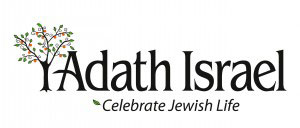This is a poem of all the laws of Sukkot, Dr. Seuss style! If you have any doubts, check the footnotes.

Click here to download a pdf: rules-of-the-sukkah-printable
1. Maimonides (RaMBaM) Mishne Torah, Hilchot Sukkah, Chapter 4, Section 1. The minimum height of a Sukkah is 10 tefachim. A tefach is a measure of the width of the four fingers of one’s hand. My hand is 3 1/4 inches wide for a minimum Sukkah height of 32 1/2 inches. The minimum allowable width is 7 tepachim by 7 tepachim. This would result in a Sukkah of 22 3/4 inches by 22 3/4 inches.
2. The maximum height is 20 Amot. An Amah is the length from the elbow to the tip of the middle finger. My Amah is 15 1/2 inches for a maximum height of 25 feet. Others say that 30 feet is the maximum.
3. According to RaMBaM the Sukkah can be built to a width of several miles. Shulchan Aruch also says there is no limit on the size of the width.
4. RaMBaM Hilchot Sukkah Chapter 4, Section 6.
5. RaMBaM Hilchot Sukkah Chapter 4, Section 11. RaMBaM states that one may construct a Sukkah by wedging poles in the four corners of the roof and suspending scakh from the poles. The walls of the building underneath are considered to reach upward to the edge of the scakh.
6. RaMBaM Hilchot Sukkah Chapter 4, Section 8-10 discusses the ins and outs of building your Sukkah in an alley or passageway
7. There is a location referred to in the Talmud called Ashtarot Karnayim. According to the discussion there are two hills, with a valley in between where the Sun does not reach. Talmud Bavli, Sukkot 2a. The halacha is that you can build your Sukkah in Ashtarot Karnayim, or other places where the sun does not reach the Sukkah because of artificial impediments, provided that if the impediment were removed, shade from the sun would now come through the scakh.
8. RaMBaM Hilchot Sukkah Chapter 4, Section 6. You can go into a Sukkah built on a wagon or a ship even on Yom Tov.
9. RaMBaM Hilchot Sukkah Chapter 4, Section 6. OK, RaMBaM says a camel but dragon rhymes with wagon a lot better, don’t you agree. Anyway, RaMBaM says you can build your Sukkah on a wagon or in the crown of a tree, but you can’t go into it on Yom Tov. There is a general rule against riding a beast or ascending into the crown of a tree on Yom Tov.
10. Chapter 5 deals with the rules for the skhakh. Basically, you can use that which has grown from the ground, and is completely detached from the ground. So, for example, you cannot bend the branches of a tree over the Sukkah to form the skhakh. But you can cut the branches from a tree and use them as skhakh.
11. This would be a violation of the rule cited in the prior footnote.
12. Shulchan Aruch, Hilchot Sukkah, Perek 636, Section 1 The Sukkah should not be built sooner than 30 days before the Hag. However, if the structure is built prior to 30 days, as long as something new is added within the 30 days, the Sukkah is kosher.
13. Of course it’s a well known rule that you must sit in the shade from the roof of the Sukkah and not in the shade that may be cast by the walls. It seems that this might affect the height of the walls, depending on the longitude of the location where you are building your Sukkah.
14. Traditionally, women, servants and minors are patur (exempt) from the Mitzvah of Sukkah. In our day we hope we know better than to read out half the Jewish people from the observance of Mitzvot. Of course, that’s just a personal opinion of the author.
15. RaMBaM ibid Chapter 6, Section 6 explains that you should eat, drink and live in the Sukkah for the 7 days as you live in your own home. One should not even take a nap outside of the Sukkah.
16. RaMBaM ibid, Section 10 If it rains one should go into the house. How does one know if it is raining hard enough? If sufficient raindrops fall through the skhakh and into the food so that the food is spoiled – go inside!
Credits: Rules of the Sukkah by Rabbi Arthur E. Gould
